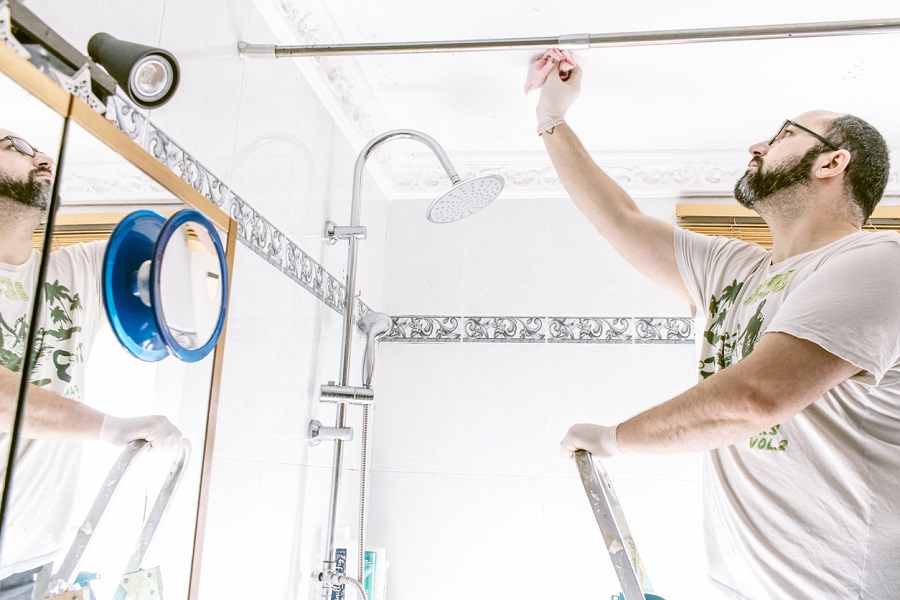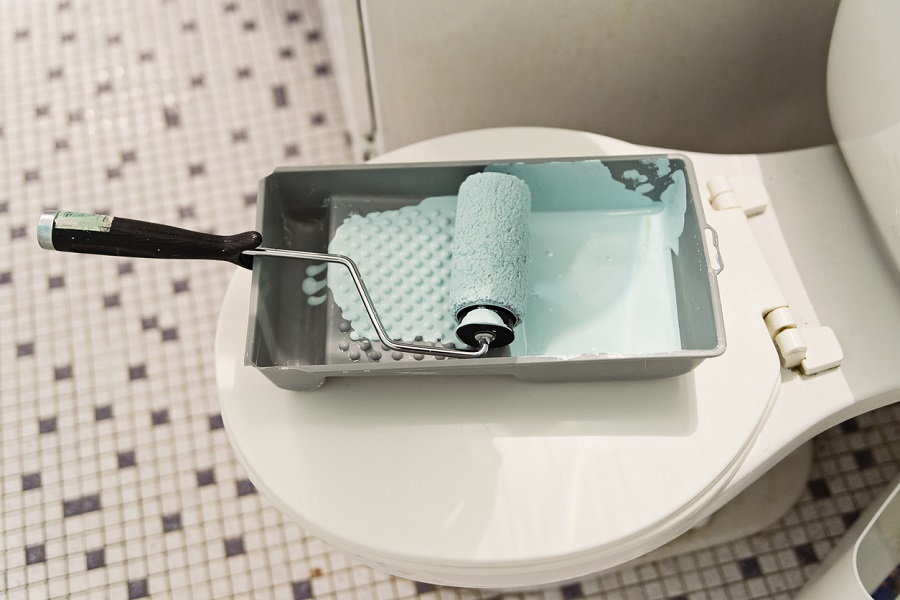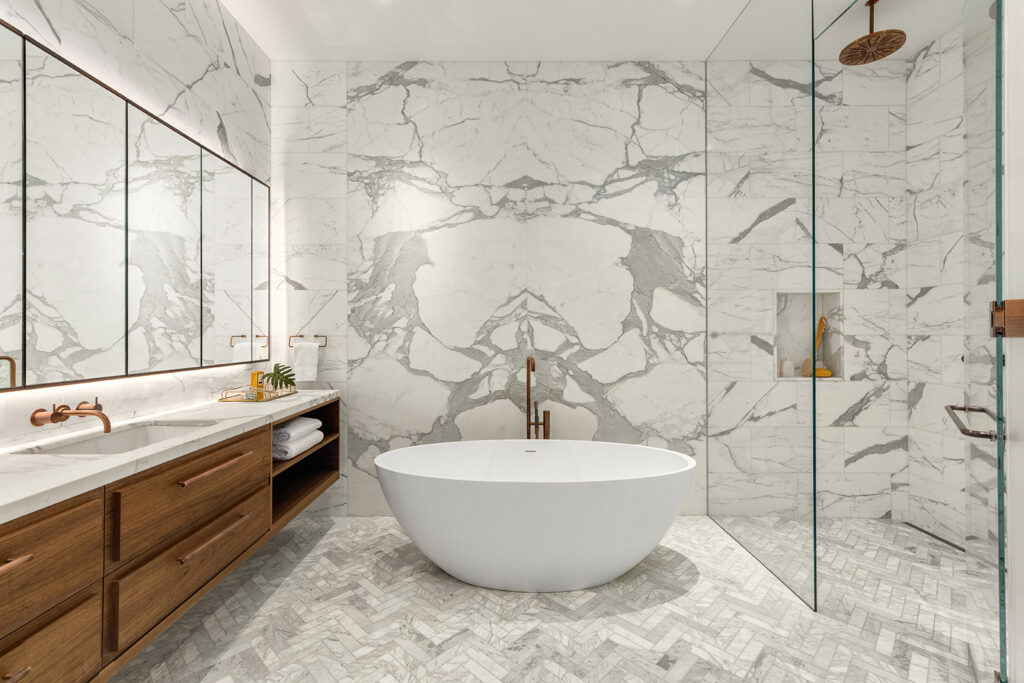
Where Can Young Americans Afford Their First Home? | 2025 Study
Nearly 75% of Americans under 30 cannot afford to buy a home in their current city, making location choice critical
So now that you’ve found the perfect color for your bathroom, which finish or sheen is right for you? Paint finishes are not only critical for creating the right atmosphere in your bathroom, but they can drastically affect the life of your bathroom and the paint itself. So let us look at bathroom paints to see the right fit for you.

A primer is an undercoat or preparatory coating that is applied before painting. Priming helps ensure better paint adhesion to the surface, increasing paint durability and providing additional protection for the material underneath. Here are the reasons you should apply a primer:
High gloss provides the most rigid, most durable, and stain-resistant of all the finishes. It is the easiest to clean and is generally used on doors and cabinets that see heavy dirt and oil. Due to the brightness of the finish, it is recommended that high gloss be used in heavy traffic areas such as entryways, halls, stairs, and floors or the bathroom, as it can help seal wood and dry to resist moisture penetration.
The most significant drawback to high-gloss is that it will reveal all imperfections on its surface, making it a finish that should be used sparingly or on features such as ceilings, accents, and cabinetry.
Semi-gloss provides a shiny, sleek appearance. This finish offers high resistance to moisture and works well in high humidity areas such as bathrooms, kitchens, laundry rooms, and high traffic spaces like hallways, playrooms, and utility rooms.
Semi-gloss and satin provide a beautiful sheen to any paint project without being too shiny or too matte. But there are some notable differences between these two paints. First, semi-gloss offers more sheen and is more reflective than satin paint.
This will make semi-gloss finished walls appear darker than the initial color. Semi-gloss is more durable, resistant to moisture, and easier to clean. Satin is better for covering up previous imperfections such as scratches and divots. Lastly, Semi-gloss is ideal for amplifying features such as ceilings, walls, and cabinetry.
Satin provides a pearl-like sheen that is more reflective than matte colors. It is resistant to moisture, more durable than eggshell or matt paints, and is easy to clean. It has a richer color than gloss paints and can hide flaws better than semi-gloss or high gloss. That being said, satin has a few drawbacks, namely that it cannot hide imperfections better than matte finishes, and it will require additional prep work to create a smooth surface.
Touch-ups are also easy to spot, and satin can lose much of its shine with excessive cleaning. Satin is an ideal material for kitchens, bathrooms, laundry rooms, or high moisture rooms. Its durability is well-suited for children’s playrooms, bedrooms, and brand-new homes with smooth, flawless walls.
Flat and matte paint finishes provide non-reflective paint finishes ideal for low-traffic areas. This finish is ideal for covering imperfections on surface applications and touching up or remodeling work. The drawback is that it will hold dirt and can be difficult to clean. In addition to low-traffic areas, matte finishes can be applied to ceilings and living rooms.
An eggshell finish provides a low-luster sheen that appears velvety and soft, similar to an eggshell. On the color spectrum, eggshell sits in the middle, making it ideal for family rooms, bedrooms, hallways, and entry walls. Eggshell is also more durable than flat and matte finishes, but it can be difficult to touch up when compared to higher gloss finishes.

Here are a few considerations for painting specific aspects of your bathroom:
When painting your bathroom, there are a few aspects to consider:
A bathroom is an area of your home with high humidity and high moisture content. If the ventilation is poor and you have no fans, it is important that you apply a primer to ensure paint adherence. Also, you need to choose paint that can withstand high moisture and humidity, such as high gloss.
Darker colors will bring out the dimensions of your bathroom, whereas light colors can help to make your space appear much larger. Light colors are ideal for small bathrooms and work well to create more reflective surfaces. Darker colors are better for larger spaces and are best used if they can compliment your bathroom’s aesthetic.
Before you begin, be sure to budget your painting. Bathroom painting can become quite expensive, so it’s important to calculate costs and make a reasonable budget for your project.
These are popular paint brands to consider as they offer an extensive selection and are easy to purchase/obtain:
To help you get started, here is a list of the most popular paint choices in 2024:
With so many paint options on the market, you can easily find the right fit for your home. So experiment with different finishes and color combinations to find the best combination for your bathroom.

Eric is the founder and president of Badeloft USA. He has been the president of Badeloft’s US division for over ten years and oversees all marketing and branding aspects of Badeloftusa.com.
His expertise lies in small business development, sales, and home and bathroom industry trends and information.
Contact us with any business related inquiries.

Free material samples and tub templates

Nearly 75% of Americans under 30 cannot afford to buy a home in their current city, making location choice critical

1 out of 5 Americans says they always feel rushed in their daily lives, yet finding cities that support a

When upgrading your bathroom, one of the most important—and often overlooked—decisions is choosing between a one-piece or two-piece toilet. While

Small details, including what you place on the floor, can make a big difference when setting up or upgrading your
Request your free material sample below. By submitting, you agree to receive occasional product updates and offers from Badeloft. Unsubscribe anytime.
"*" indicates required fields
"*" indicates required fields
"*" indicates required fields